Air Force One: The Aircraft
21232
21232

Filling a void in major works about rare and exotic flight test aircraft, this book is the definitive work on the converted bombers and transports that served as the critically important launch vehicles to the headline-grabbing X-Planes. Covered are scores of aircraft of all types converted for use as “flying laboratories” to test engines, wings, cockpits, and aerodynamic devices all in the name of aviation progress. Also included are the “parasite” aircraft carried aloft to be launched and recovered by their motherships.
With 204 pages and 12 detailed chapters in this book, it thoroughly covers every aspect of mothership, testbed, and parasite aircraft. Also featured are detailed appendices containing extensive reference material for modelers, historians, and enthusiasts, including a complete listing of known engine testbeds; a complete listing of known airframe mods and systems-test aircraft; and all combinations of U.S. and foreign motherships and parasite-carrying aircraft.
Aviation history is filled with legendary aircraft, but in many cases, the design and development of these brilliant machines were dependent on significant inflight testing of new engines, advanced airframe structures, and the latest in flight control and flight-related systems. The availability of already-flying airframes that could be modified easily for specific airborne test work saved years of engineering time, not to mention the lives of countless test pilots who did not have to face airborne risks of the unknown.

Although one of the Luftwaffe’s lesser-known front line aircraft, the Dornier Do 215, descended from the Dornier Do 17, saw service in a wide range of roles, including night fighter, reconnaissance and staff transport. In doing so it demonstrated remarkable flexibility for both the Luftwaffe and several foreign operators between 1939 and1944.
This new book describes the Do 215’s operations with the Luftwaffe’s secretive Aufkl rungsgruppe Ob.d.L., both in wartime operations in the West and in civil disguise in preparation for Operation Barbarossa in 1941 and during the invasion itself. It describes its lineage from the dedicated reconnaissance aircraft Do 17R, as well as the development of the Do 17 Z-7/Z-10 which preceded the Do 215 B-5 nightfighter, one of the first aircraft to employ radar and infrared sighting equipment. The Do 215 was also the chosen aircraft of several leading Luftwaffe commanders, including Josef Kammhuber, Albert Kesselring and Erhard Milch.
Following many years of extensive research the author describes the covert reconnaissance, night-fighter and staff transport service of the Do 215 and how the type was affected by the protracted development of the Dornier’s DB 600 and DB 601 powerplants. He also uncovers details of the export efforts made by Nazi Germany with Yugoslavia, Romania, Sweden, The Netherlands, the Soviet Union and other nations, as well as the late war Hungarian operation of the Do 215.
With hundreds of rare photographs, specially commissioned color artwork, technical and performance data, details on camouflage and markings, production and loss lists, Mikael Olrog presents a fascinating and revealing account of the often overlooked and misunderstood Dornier Do 215.
20744
20704
20665
20666

This rakish fighter became known as the ‘mount of aces’, being the type on which the most successful fighter pilots of Britain and her Empire went to war throughout the last 18 months of World War 1. It was the Spitfire of the Western Front: delivering greater speed, range, firepower and all-round performance than the vast majority of its opposition. Often working in partnership with the more pugnacious Sopwith Camel, the S.E.5 and S.E.5a ensured that no enemy aircraft was safe even a long way behind their own lines as the Royal Flying Corps gradually won air superiority over the trenches.
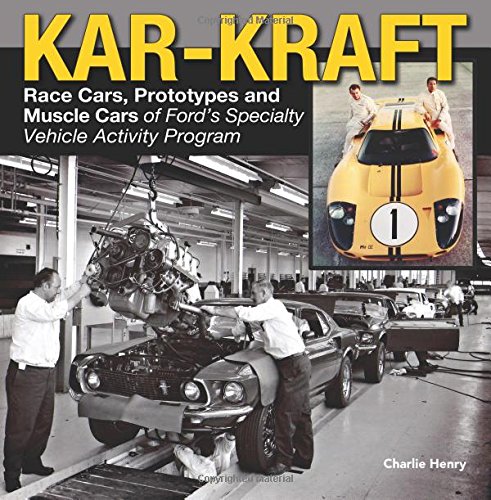
The story of Kar-Kraft began, as did many others in the automotive industry, with an axe to grind. In 1963, Ford was seriously interested in purchasing Ferrari. Ferrari was a legendary brand with considerable success in racing, and Ford saw the acquisition as a great way to be instantly successful in the racing arena. When Enzo Ferrari realized that Ford would not give him complete control of the racing program, he backed out of the deal late in the process. Ford had spent millions in vetting and audits, which then set in motion a vengeful response against Ferrari. The result was the unthinkable: Ford beat Ferrari at Le Mans.
Ford wanted to become competitive quickly, but it did not have the race history or resources in house. To remedy the situation, Ford searched the U.K. for an independent company to help accelerate its race car development. It first settled on Lola Cars and set up Ford Advanced Vehicles. Later, Ford brought its LeMans effort to the U.S. and the Kar-Kraft relationship was established. Although Kar-Kraft was technically an independent company, it really only had one customer: Ford Special Vehicles. Kar-Kraft’s story doesn’t begin and end with the GT 40 that took the win away from Ferrari at Le Mans. Ford expanded upon the program and organized an all-out assault on racing in general. Cars were prepared for Trans-Am, NASCAR, NHRA, and Can-Am competition. Street versions of the Boss 429 were assembled under its roof. And fabled prototypes including the LID Mustang, Boss 302 Maverick, and Mach 2C were all assembled in Ford’s contracted race shop. And then, out of the blue, its doors closed for good on a cold day in 1970.
History tells us that Ford won Le Mans, the Daytona 500, and the Trans-Am championship. But it doesn’t tell us how this was accomplished. Author Charlie Henry (a former Kar-Kraft employee) has enlisted the help of many of his former co-workers to bring you the very first book ever published on Ford’s all-encompassing special projects facility, Kar-Kraft.
20356
20303
20282

The Fisher Body Craftsman’s Guild was a national auto design competition sponsored by the Fisher Body Division of General Motors. This competition was for teenagers to compete for college scholarships by designing and building scale model “dream” cars. Held from the 1930s through the 1960s, it helped identify and nurture a whole generation of designers and design executives.
Virgil M. Exner, Jr., Charles M. Jordan, Robert W. Henderson, Robert A. Cadaret, Richard Arbib, Elia ‘Russ’ Russinoff, Galen Wickersham, Ronald C. Hill, Edward F. Taylor, George R. Chartier, Charles W. Pelly, Gary Graham, Charles A. Gibilterra, E. Arthur Russell, William A. Moore, Terry R. Henline, Paul Tatseos, Allen T. Weideman, Kenneth J. Dowd, Stuart Shuster, John M. Mellberg, Harry E. Schoepf, and Ronald J. Will, are among those designers and design executives who participated in the Guild. The book also describes many aspects of the miniature model Napoleonic Coach and other scale model cars the students designed.
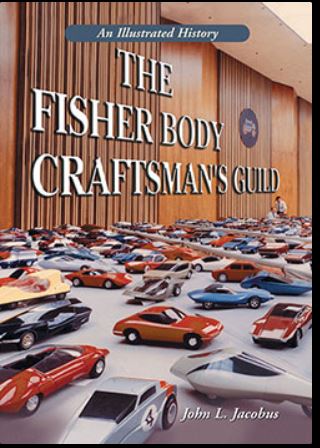
From 1930 to 1968, General Motors sponsored a 1:12 scale model automobile design competition for youth—the famous Fisher Body Craftsman’s Guild. Each year thousands of boys and young men from across America competed for scholarships by designing, building, and submitting a scale model of their own “dream car,” to be judged on such qualities as design originality and craftsmanship. A public relations bonanza for GM, the program helped to identify and nurture a generation of future leaders in design engineering, automotive design, automotive styling, industrial design and other endeavors.
In these essays, more than 30 Guildsmen chronicle their experiences in the competition, revealing their model car design techniques, tricks, and secrets: Philip J. Rauth, Joseph R. Rauth, Herman I. Rauth, Roger D. Teter, Gordon D. Williams, William A. Keyser, Jr., Warren M. Bakken, Wilfred C. Keagy, Arnold L. Joslin, Raymond P. Wykes, Charles R. Foreman, Adrian A. Bruno, Charles H. Stewart, George E. Anderson, William D. Scott, Walter F. O’Neill, Jr., Thomas L. De Fazio, Felix R. Collazo, Ronald J. Will, Roger L. Schneider, Thomas L. Covert, Paul F. Bonfilio, George G. Herzog, Samuel T. Kjellman, Frederick J. “Bud” Magaldi, Geza A. Loczi, Jeffrey A. Jones, Robert W. Lawhn, Tom W. Graboski, Terry P. Graboski, Spencer L. Mackay, Grant Onnie, John L. Jacobus and John M. Mellberg.
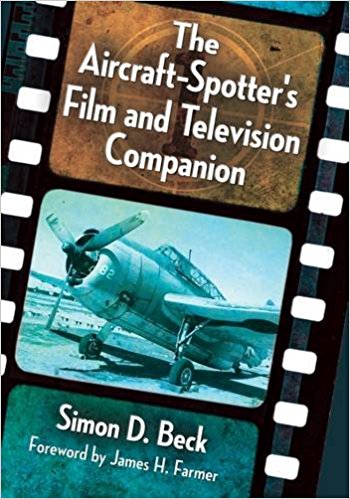
Ever wondered how many aircraft were converted into Japanese Zeroes and torpedo bombers for Tora! Tora! Tora! or how French Gazelle helicopters were modified for the title role in Blue Thunder? This first of its kind reference book lists aircraft featured in 350 films and television shows, providing brief individual histories, film locations, serial numbers and registrations. Aircraft are also cross-referenced by manufacturer. Appendices provide brief bios on pilots and technicians, information on aircraft collections owned by Tallmantz Aviation and Blue Max Aviation and film credits for U.S. aircraft carriers.
20032
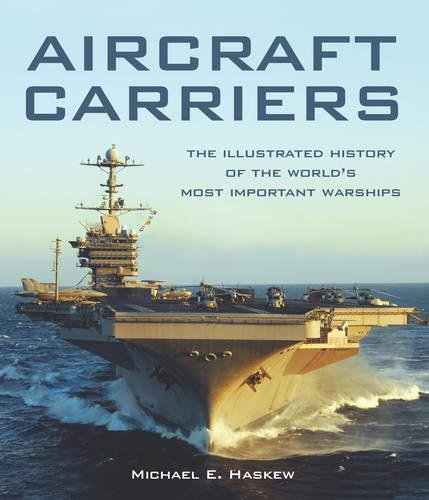
Step aboard the floating cities that patrol international waters, launch aircraft from their decks, and decide the fate of war. Behold the king of naval warfare: the aircraft carrier.
Soon after the Wright Brothers’ historic flight in 1903, officials explored the airplane’s military applications. The seaplane and the flying boat were conceived to combine air and naval operations, but their potential proved limited. Aircraft that could operate from the deck of a ship, however, offered tremendous possibilities. A few visionaries seized the opportunity, and by mid-century the aircraft carrier eclipsed the battleship as the preeminent weapon of naval warfare.
Since the first successful launch of an airplane from the deck of a naval ship in 1910, “fighting flattops” have evolved into immense, nuclear-powered vessels–floating cities capable of launching dozens of aircraft performing a variety of missions, including attack, escort, antisubmarine patrol, and deterrence. This illustrated history covers that evolution, from the first tentative steps taken by naval aviators before World War I to the roles these massive ships have played in the War on Terror. While author Michael Haskew focuses on US Navy carriers, he also provides coverage of parallel and competing carrier developments overseas. In addition to explaining the technologies behind past and present carriers and their aircraft, Haskew reexamines major engagements involving carriers, especially the epic Pacific battles of World War II, as well as personalities who were central to carrier development and deployment and naval doctrine relating to carriers.
Filled with carefully curated period photography and modern images showing aircraft carriers throughout the decades, Aircraft Carriers is a celebration of naval warfare’s most important innovation.
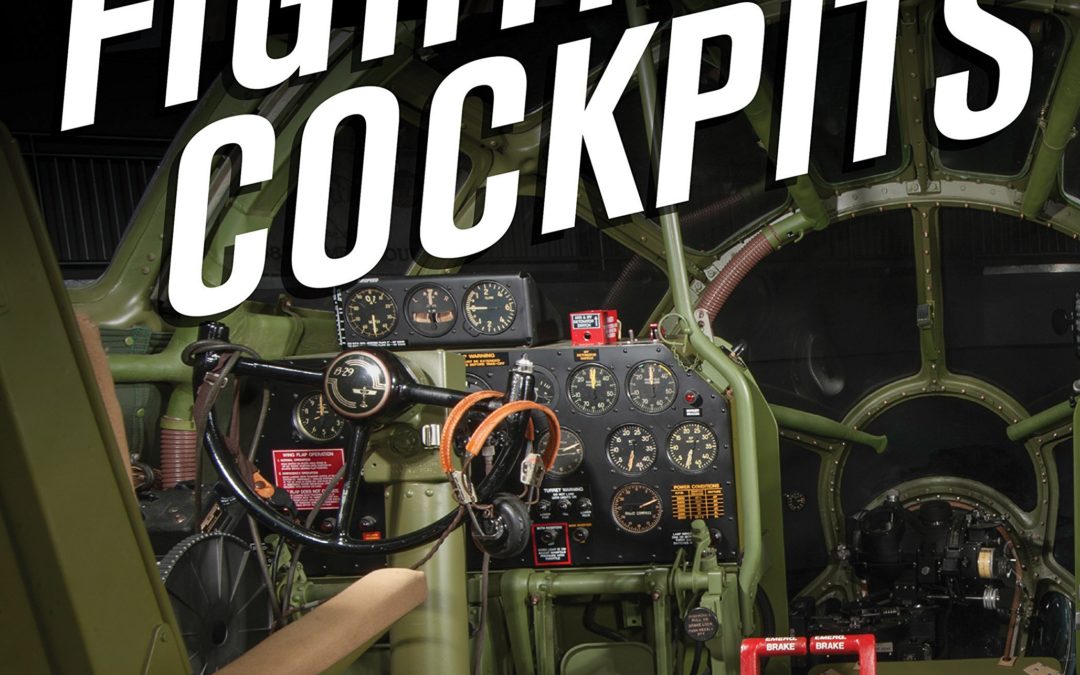
What was it like to sit in the pilot’s seat and take control of a P-51 Mustang in World War II? What about an F-14 Tomcat at the height of the Cold War? Or a Lockheed Martin F-22 Raptor today? The cockpits of these fighter and bomber aircraft are revealed in Fighting Cockpits.
Showcasing more than 50 of the world’s most famous combat cockpits from early World War I aircraft to present-day fighters, this book includes more than 200 rich color photos from photographer Dan Patterson, as well as detailed history about combat cockpit development from aviation expert and historian Donald Nijboer.
Presented in large-format, you’ll be blown away by studio shot spreads of views from the cockpits, vintage photographs of the aircrafts in action, and modern photography of surviving crafts. This book will complete any history buff or aviation enthusiast’s library.
Aircraft include:
Wind in the Wires: Nieuport 28, Royal Aircraft Factory S.E.5, Bristol F.2, Fokker Dr.I, Sopwith Camel, Sopwith Triplane, AEG G.IV, SPAD VII, Halberstadt CL.IV, Fokker D.VII
The Rise of the Monoplane: Martin MB-2, Hawker Hind, Fiat CR.32, Boeing P-26 Peashooter, Curtiss F9C, Sparrowhawk, Vought SB2U Vindicator, Westland Lysander, PZL P.11
World War II: Supermarine Spitfire, Messerschmitt Bf 109, Republic P-47 Thunderbolt, North American P-51 Mustang, Handley Page Halifax, Vickers Wellington, Focke-Wulf Fw 190 Wurger, Fairey Firefly, Fiat CR.42, Ilyushin Il-2 Sturmovik, Heinkel He 219 Uhu, Kawasaki Ki-45 Toryu, Curtiss SB2C Helldiver, Northrop P-61 Black Widow, Boeing B-17 Flying Fortress, Boeing B-29 Superfortress, Dornier Do 335 Pfeil, Messerschmitt Me 262 Schwalbe, Arado Ar 234 Blitz
Cold War to the Present: North American F-86 Sabre, Boeing B-52 Stratofortress, Grumman A-6 Intruder, General Dynamics F-111 Aardvark, Hawker Siddeley Harrier, McDonnell Douglas/Boeing F-15 Eagle, Grumman F-14 Tomcat, Fairchild Republic A-10 Thunderbolt II, General Dynamics/Lockheed Martin F-16 Fighting Falcon, Mikoyan MiG-29, Rockwell B-1 Lancer, Lockheed Martin F-117 Nighthawk, Lockheed Martin F-22 Raptor, Lockheed Martin F-35 Lightning II Joint Strike Fighter

A comprehensive history with descriptions of the world’s most significant aircraft employed as “eyes in the sky.”
For as long as there has been sustained heavier-than-air human flight, airplanes have been used to gather information about our adversaries. Less than a decade after the Wright Brothers flew at Kitty Hawk, Italian pilots were keeping tabs on Turkish foes in Libya. Today, aircraft with specialized designs and sensory equipment still cruise the skies, spying out secrets in the never-ending quest for an upper hand.
Spyplanes tackles the sprawling legacy of manned aerial reconnaissance, from hot air balloons to cloth-and-wood biplanes puttering over the Western Front, and on through every major world conflict, culminating with spyplanes cruising at supersonic speeds 85,000 feet above the Earth’s surface. Authors Norman Polmar and John Bessette offer a concise yet comprehensive overview history of aerial recon, exploring considerations such as spyplanes in military doctrine, events like the Cuban Missile Crisis and the downing of Francis Gary Powers’ U-2, the 1992 Open Skies Treaty, and the USAF’s Big Safari program.
Polmar and Bessette, along with a roster of respected aviation journalists, also profile 70 renowned fixed-wing spyplanes from World I right up to the still-conceptual hypersonic SR-72. The authors examine the design, development, and service history of each aircraft, and offer images and specification boxes that detail vital stats for each. Included are purpose-built spyplanes, as well as legendary fighters and bombers that have been retrofitted for the purpose. In addition, the authors feature preliminary chapters discussing the history of aerial surveillance and a host of sidebars that explore considerations such as spyplanes in military doctrine, events like the Cuban missile crisis and the downing of Francis Gary Powers’ U-2, the 1992 Open Skies Treaty, and the USAF’s current Big Safari program.
From prop-driven to jet-powered aircraft, this is the ultimate history and reference to those “eyes in the skies” that have added mind-bending technologies, not to mention an element of intrigue, to military aviation for more than a century.
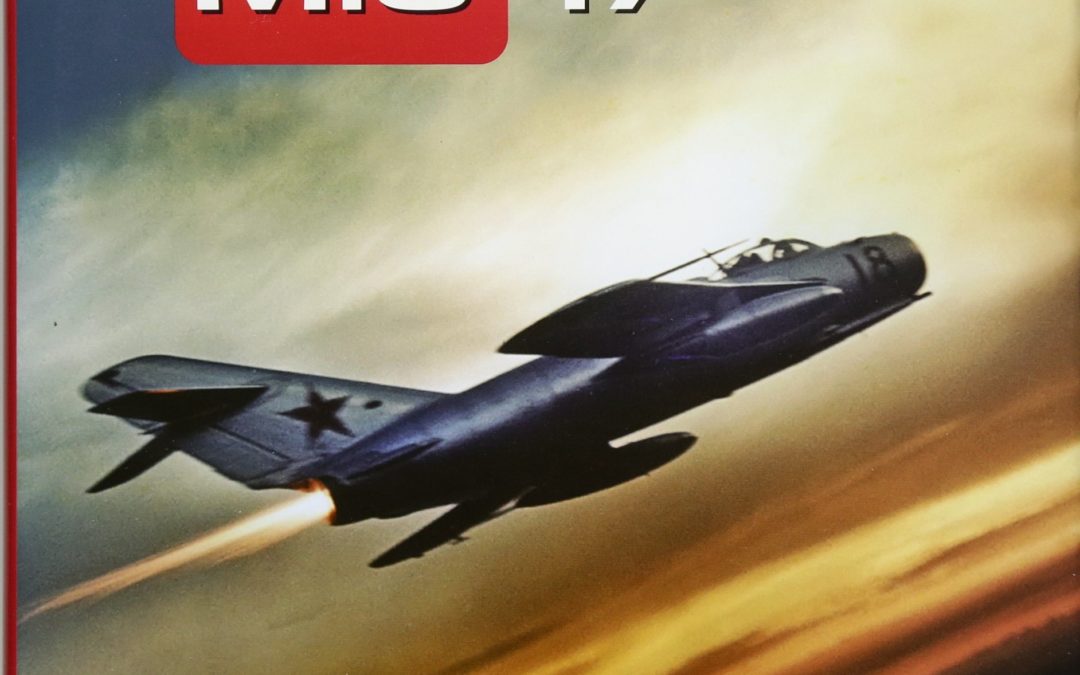
The Mikoyan Design Bureau’s first swept-wing jet fighter, the MiG-15 Fagot, which gained world fame (or notoriety, depending on which side of the Iron Curtain you were on) after the Korean War, served as the basis for a more refined model, the MiG-17 Fresco. No sooner had the MiG-15 entered production and service than the designers decided to increase the wing sweep from 35 degrees to 45 degrees, initially by way of experiment. The resulting aircraft showed higher performance than the MiG-15, exceeding Mach 1 in a shallow dive during a test flight, something the Fagot had been unable to do.
Following its production entry the MiG-17 was constantly improved, with Mikoyan developing a succession of production and experimental versions. Firstly, an afterburning engine was fitted to improve performance. Secondly, the increasingly frequent incursions by NATO reconnaissance aircraft, coupled with the knowledge that the West was developing all-weather fighters, led the Soviet ‘fighter makers’ to develop a number of radar-equipped interceptors. The all-weather versions of the MiG-17 proved to be the most successful and some of them were cleared for production.
Starting in the mid-1950s, the MiG-17P, MiG-17PF and MiG-17PFU (the latter version was armed with air-to-air missiles) were the most widespread interceptors in the Soviet Air Defence Force for the nearly two decades.
The MiG-17F day fighter was widely exported and saw a good deal of fighting, receiving its baptism of fire in the Middle East where Egyptian Frescos were pitted against Israeli Dassault Mystère IVs. However, the type became really famous after the Vietnam War where it successfully opposed the supersonic McDonnell F-4 Phantom II and other US aircraft.
Being displaced from first-line fighter service by more modern types, the MiG-17 and MiG-17F found use as a fighter-bomber–both at home and abroad. The MiG-17F and MiG-17PF saw service with nearly all Warsaw Pact nations, as well as many Asian and African countries and Cuba.
The book fully describes the MiG-17’s development history and charts the type’s combat operations in various major wars and local conflicts. A separate chapter also compares the MiG-17 and its foreign counterparts and the book concludes with details of MiG-17 fleets and operators worldwide.
lllustrated with many unique photos, color side views, line and cutaway drawings this latest addition to the Famous Russian Aircraft series forms a details record of the type and will appeal to modelers and historians alike.